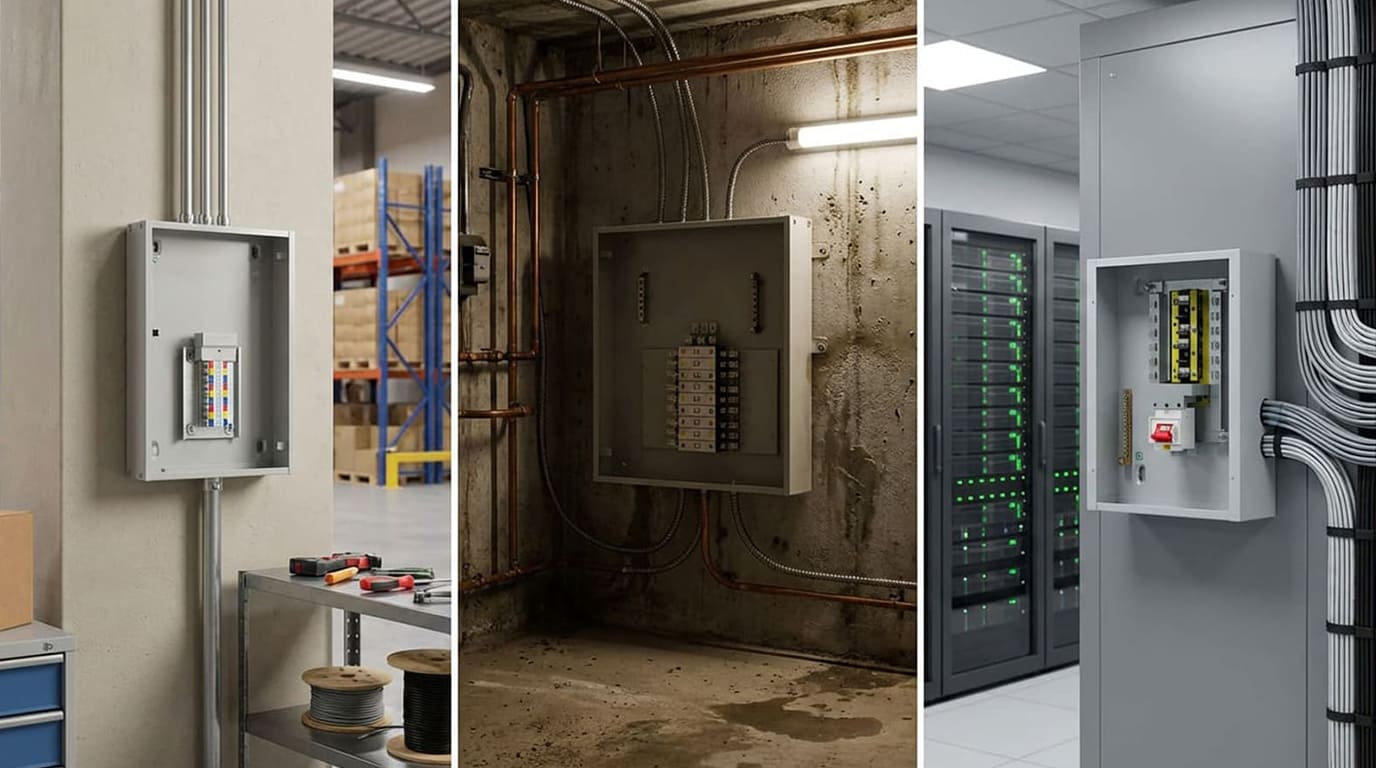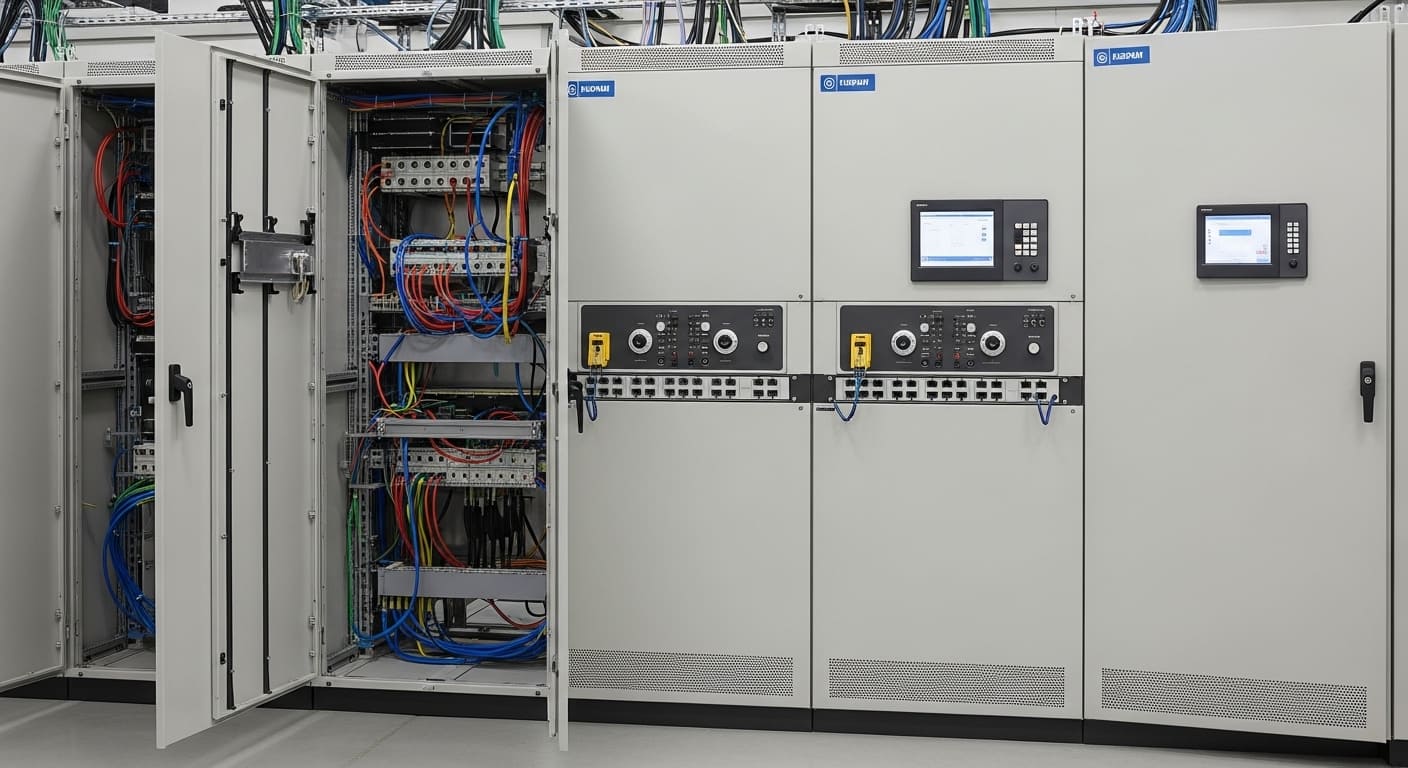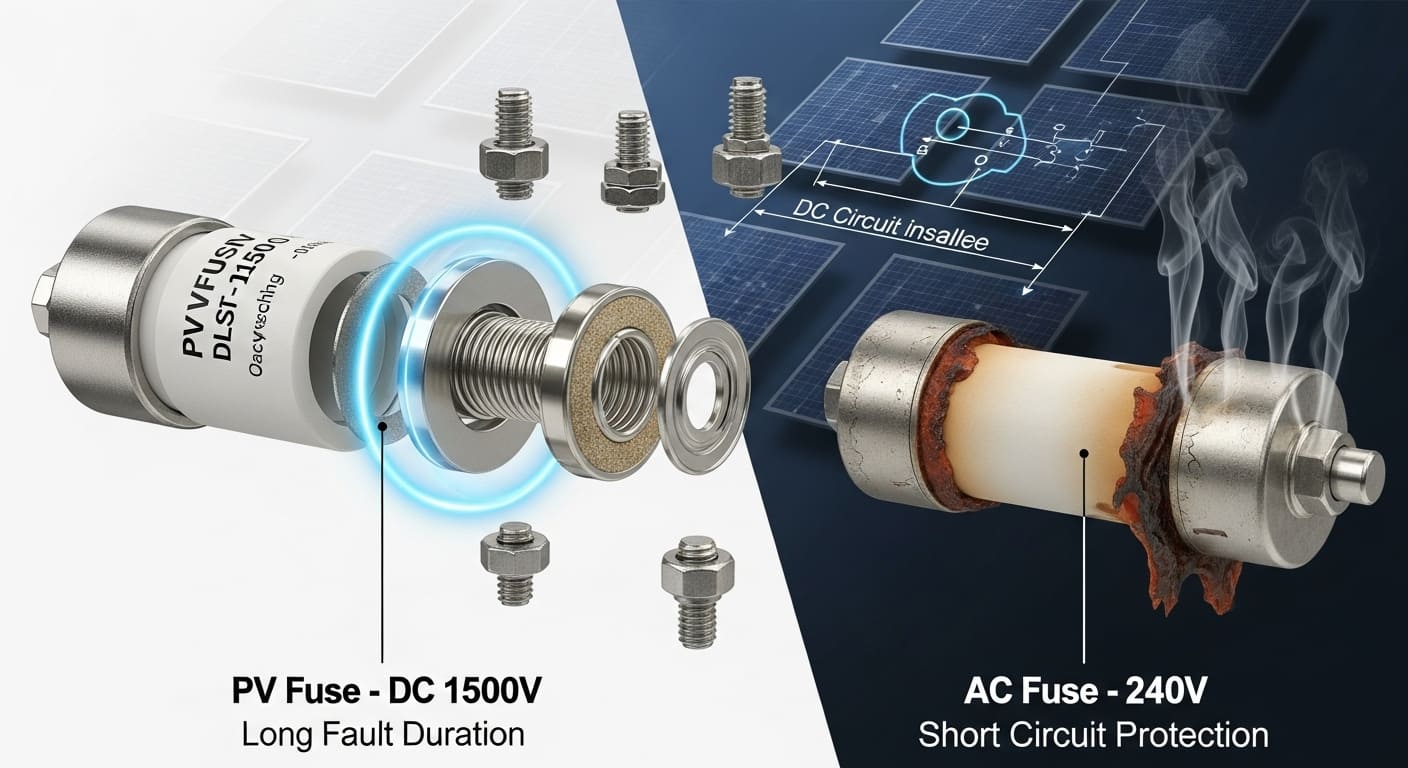Rail systems depend entirely on consistent power. Failures cause massive delays, strand passengers, and pose serious safety risks. Unreliable components are simply not an option.
Reliable power is absolutely critical for rail transit. It ensures trains run on schedule, signaling systems operate correctly, passenger safety is maintained, and costly downtime is avoided. This reliability depends heavily on robust, high-quality electrical protection components.

The smooth operation of modern railways, whether high-speed lines, metro systems, or freight transport, hinges on a complex electrical backbone. From traction power to signaling and station services, any interruption can have significant consequences. I recall visiting a rail maintenance depot where they showed me components damaged by unexpected power surges – a costly lesson in the need for robust protection. Let's look closely at the specific components that ensure this vital power keeps flowing safely and reliably.
How Do Fuse Switch Disconnectors Ensure Safety in Rail Power Systems?
Need dependable circuit protection and isolation in demanding rail environments? Using standard industrial parts can lead to failures due to vibration or electrical stress. Specialized components are essential for rail safety.
Fuse switch disconnectors ensure rail safety by providing reliable overcurrent protection against faults and safe, visible isolation points for maintenance within the unique vibration and electrical conditions found in railway power distribution systems.
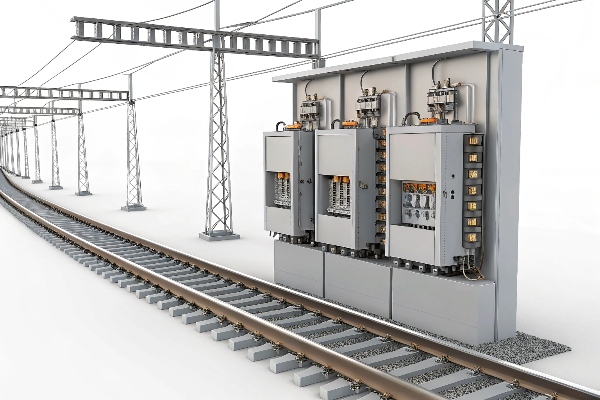
Rail power systems, including rolling stock and trackside infrastructure, operate under conditions far more demanding than typical industrial settings. Fuse switch disconnectors play a crucial role here, offering both protection and safety isolation in one device, but they must be designed for the task.
Overcurrent Protection
Trains draw large amounts of power, and electrical faults (like short circuits) can involve very high currents. Fuses within the switch disconnector must be rated to handle the normal operating currents but reliably interrupt these potentially damaging fault currents. This protects downstream equipment like converters, motors, and signaling gear from damage. We ensure our fuses meet appropriate IEC standards1 (like IEC 60269) for breaking capacity suitable for railway applications.
Safe Isolation
Maintenance on rail electrical systems requires absolute certainty that circuits are de-energized. Fuse switch disconnectors provide a clear, visible air gap when opened, giving maintenance crews confidence the section is safe to work on. Features like lockable handles (for Lockout/Tagout procedures2) are vital safety requirements in the rail industry, preventing accidental re-energization.
Rail Environment Suitability
Components used in rail must withstand constant vibration, shock, and wide temperature ranges. Our vertical fuse switch disconnectors, for example, are designed with robust construction and secure terminal connections to prevent loosening under vibration. Materials are chosen for durability and resistance to environmental factors often found trackside or onboard trains.
| Feature | Rail System Requirement | Fuspan Solution Emphasis |
|---|---|---|
| High Breaking Capacity | Handle large fault currents | Fuses tested to relevant IEC standards |
| Reliable Operation | Consistent performance needed | Robust mechanical design, quality materials |
| Vibration Resistance3 | Withstand constant movement | Secure terminals, durable construction |
| Visible Isolation | Ensure maintenance safety | Clear air gap when open, lockable handle |
| Compact Design | Fit in limited space | Vertical mounting options save cabinet space |
From my experience working with rail system integrators, the robustness and proven reliability of components like our fuse switch disconnectors are key factors in their selection process. There's no room for compromise when passenger safety is involved.
Why Are Robust Busbar Systems Essential for Rail Infrastructure?
Distributing high currents reliably in space-constrained, high-vibration rail cabinets is tough. Traditional heavy cabling is bulky, hard to install securely, and prone to connection issues over time. Robust busbars offer a superior solution.
Robust busbar systems are essential in rail because they provide highly reliable, space-efficient, and vibration-resistant power distribution compared to cables. They simplify connections, improve thermal management, and reduce potential failure points in critical applications.
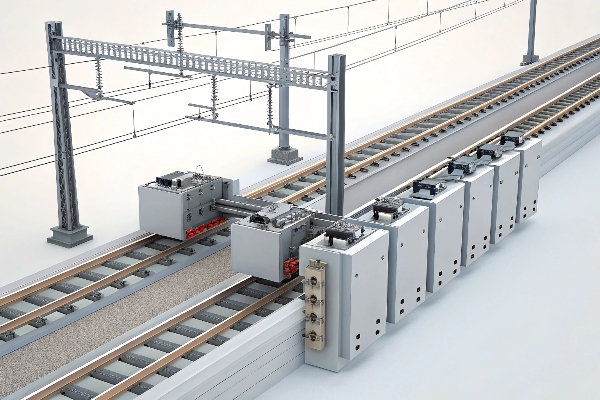
Power distribution within rolling stock electrical cabinets or trackside signaling enclosures faces unique challenges. High currents need to be distributed safely and reliably, often within very limited spaces, all while enduring constant mechanical stress. Busbar systems are exceptionally well-suited to meet these demands.
Space Optimization and Simplified Wiring
Rail cabinets are notoriously packed with equipment. Busbar systems replace bulky bundles of large-diameter cables with compact, rigid conductors. This saves a significant amount of space, allowing for denser component layouts or improved airflow. More importantly, they provide fixed, standardized points for connecting devices like fuse switches or circuit breakers using adapters. This dramatically simplifies wiring, reduces installation time, and minimizes the chance of wiring errors compared to manually routing and terminating many heavy cables.
Enhanced Reliability under Vibration
One of the biggest challenges in rail is constant vibration and shock. Screw terminals on cables can potentially loosen over time under these conditions, leading to high-resistance connections, overheating, or even complete failure. Busbar systems often use bolted or specialized clamp connections that provide a much more secure and vibration-resistant interface. The rigid structure of the busbar itself is inherently less susceptible to vibration fatigue than flexible cables. We ensure our busbar systems4 and associated connection hardware are designed for mechanical stability.
Thermal Management
Distributing high currents generates heat. Busbars, typically made of copper or aluminum with a large surface area, are much better at dissipating this heat than insulated cables packed together. This improved thermal management5 helps prevent overheating, increases the lifespan of connected components, and enhances overall system safety, especially in enclosed cabinets.
| Feature | Traditional Cabling in Rail | Busbar System in Rail | Benefit for Rail Application |
|---|---|---|---|
| Space Usage | Bulky, requires space | Compact, efficient | Fits more in limited space, better airflow |
| Vibration Resistance | Terminals can loosen | Secure connections, rigid structure | Higher reliability, less maintenance |
| Installation | Complex, time-consuming | Simpler, faster, fewer error points | Lower installation cost, improved consistency |
| Heat Dissipation | Poor when bundled | Excellent | Reduced overheating risk, longer component life |
| Current Capacity | Limited by cable size | High capacity in compact form | Suitable for high power traction/auxiliary |
I've seen firsthand how implementing well-designed busbar systems, like our distribution blocks, transforms the build process and long-term reliability of rail electrical panels. The neatness and robustness are immediately apparent compared to traditionally wired panels.
What Challenges Does the Rail Environment Pose for Electrical Components?
Think standard industrial components are good enough for rail systems? The harsh reality of vibration, extreme temperatures, and electrical stresses can lead to premature failures and compromise safety. Rail demands tougher components.
The rail environment poses significant challenges including constant vibration and shock, wide temperature fluctuations, exposure to dust and moisture, and severe electrical stresses like surges and harmonics, demanding components with superior durability and proven reliability.

Electrical components destined for use in rail transit systems, whether onboard trains or in trackside infrastructure, must endure conditions far beyond typical industrial environments. Understanding these specific challenges highlights why component selection is so critical for safety and reliability.
Mechanical Stress6 (Vibration and Shock)
This is perhaps the most defining characteristic. Trains are constantly vibrating, and components experience frequent shocks during starting, stopping, and traversing track imperfections. This mechanical stress can:
- Loosen electrical connections over time, leading to high resistance, heat, and potential failure.
- Cause fatigue in materials, leading to cracks or breaks in enclosures or internal parts.
- Affect the calibration or operation of sensitive devices.
Components must be designed with robust housings, secure mounting, and vibration-resistant terminals.
Environmental Factors
Rail equipment operates outdoors or in partially protected enclosures, exposing it to:
- Wide Temperature Swings7: From freezing temperatures in winter to high heat inside unventilated cabinets in summer sun. Materials must maintain their integrity and electrical properties across this range.
- Dust and Moisture: Brake dust, general grime, rain, snow, and condensation can infiltrate enclosures, potentially causing short circuits, corrosion, or insulation breakdown if components are not adequately sealed or protected (IP rating).
Electrical Stresses[^8
Rail power systems are complex and can subject components to:
- Voltage Fluctuations and Surges: Variations in the overhead line or third rail supply, as well as switching operations, can create voltage spikes that damage sensitive electronics if not properly protected.
- Harmonics: Power electronics used in traction drives can introduce harmonic distortion into the electrical system, potentially stressing components like fuses and capacitors.
- High Fault Currents: The power available in rail systems means short circuits can involve very high currents, requiring protective devices with sufficient breaking capacity.
| Challenge Type | Specific Examples | Impact on Components | Required Component Feature |
|---|---|---|---|
| Mechanical Stress | Vibration, shock | Loosening terminals, material fatigue, malfunction | Robust design, secure connections |
| Temperature | Extreme heat/cold cycles | Material degradation, performance variation | Wide operating temperature range |
| Contamination | Dust, moisture, pollutants | Corrosion, short circuits, insulation failure | Adequate IP rating, sealing |
| Electrical Stress | Surges, harmonics, high fault levels | Insulation breakdown, overheating, catastrophic failure | Proper voltage/current ratings, high breaking capacity, surge tolerance |
Meeting these challenges requires more than just basic compliance. It demands components specifically designed or verified for rail conditions. This is why rigorous testing and quality control, like our 100% factory testing, are so important.
How Does Component Certification (IEC) Guarantee Reliability in Rail Projects?
Need assurance that electrical components will perform safely and reliably for years in demanding rail projects? Relying on uncertified parts is risky. IEC certification provides crucial evidence of quality and suitability.
IEC certification guarantees rail reliability by confirming components meet stringent international standards for performance, safety, and durability under conditions relevant to rail, assuring EPC contractors and operators of long-term dependable operation.

For EPC contractors like Mr. Abdu managing large-scale rail infrastructure projects, sourcing reliable components is paramount. The long service life expected, the critical nature of operations, and the severe environmental conditions demand proof of quality. International Electrotechnical Commission (IEC) standards provide this globally recognized benchmark.
Why IEC Standards Matter Specifically for Rail
While some IEC standards are general (like IEC 60947 for switchgear), others are directly relevant or have aspects critical for rail:
- Performance under Stress: IEC tests often include vibration, shock, and temperature cycling tests relevant to rail conditions, ensuring components maintain functionality.
- Safety Verification: Standards mandate tests for electrical safety, like insulation strength and fault current interruption (e.g., breaking capacity defined in IEC 60269 for fuses), crucial for preventing fires or electrical hazards.
- Defined Characteristics: Certification ensures predictable performance characteristics (e.g., time-current curves for fuses), essential for proper system coordination and protection design.
- Material Quality: Standards often specify requirements for materials regarding flammability, tracking resistance, and durability.
Benefits for Rail Procurement and Projects
Specifying and using IEC-certified components brings tangible advantages:
- Risk Mitigation: Reduces the risk of premature failures, system downtime, and associated safety hazards.
- Compliance Assurance: Meets tender requirements and regulatory demands common in major infrastructure projects.
- Supplier Confidence: Demonstrates a supplier's commitment to quality, like Fuspan's focus on IEC compliance, backed by our ISO 9001 system and 100% testing. This addresses key concerns about supplier capability and product consistency.
- Documentation: Certified components come with datasheets and test reports confirming compliance, fulfilling the crucial need for complete technical documentation Mr. Abdu requires.
| Rail Project Need | How IEC Certification Helps | Fuspan's Commitment |
|---|---|---|
| Long-Term Reliability | Tests for endurance, environmental stress | ISO 9001 process, 100% testing, quality materials |
| Safety Assurance | Verifies insulation, fault handling, material safety | Design according to safety standards, type tests |
| Performance Guarantee | Confirms electrical ratings and characteristics | Accurate datasheets based on IEC test results |
| Project Compliance | Provides internationally recognized standard proof | Full technical documentation package available |
| Supplier Trust | Indicates commitment to quality and standards | Experienced manufacturer focused on certified components |
My discussions with procurement managers for rail projects always circle back to reliability and proof. IEC certification8 isn't just a label; it's evidence that the component can be trusted to perform safely and reliably in the demanding rail environment, ensuring the long-term success of the project.
Conclusion
Reliable power is non-negotiable for safe rail operations. Robust, IEC-certified components like fuse switch disconnectors and busbar systems are essential to withstand rail's harsh environment and ensure continuous power delivery.
-
Understanding IEC standards is crucial for ensuring safety and reliability in railway systems. Explore this link to learn more about these important guidelines. ↩
-
Lockout/Tagout procedures are vital for safety during maintenance. Discover best practices to ensure safe working conditions in electrical systems. ↩
-
Vibration resistance is essential for rail components. Learn about the technologies and materials that enhance durability in challenging environments. ↩
-
Explore the benefits of busbar systems to understand how they enhance efficiency and reliability in electrical setups. ↩
-
Discover the importance of thermal management in busbar systems and how it contributes to safety and longevity of electrical components. ↩
-
Understanding mechanical stress is crucial for designing durable train components that withstand vibrations and shocks. ↩
-
Explore how temperature variations impact component integrity and performance in rail systems for better design choices. ↩
-
Understanding IEC certification can help you grasp its significance in ensuring safety and reliability in rail systems. ↩


